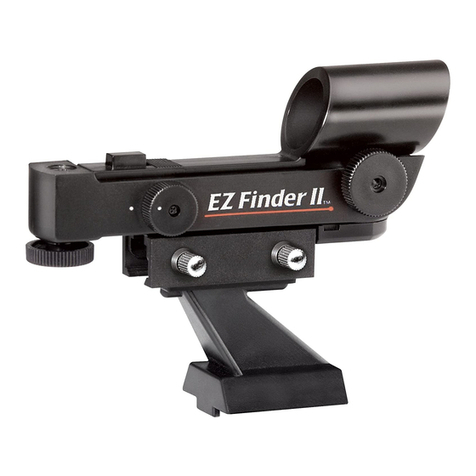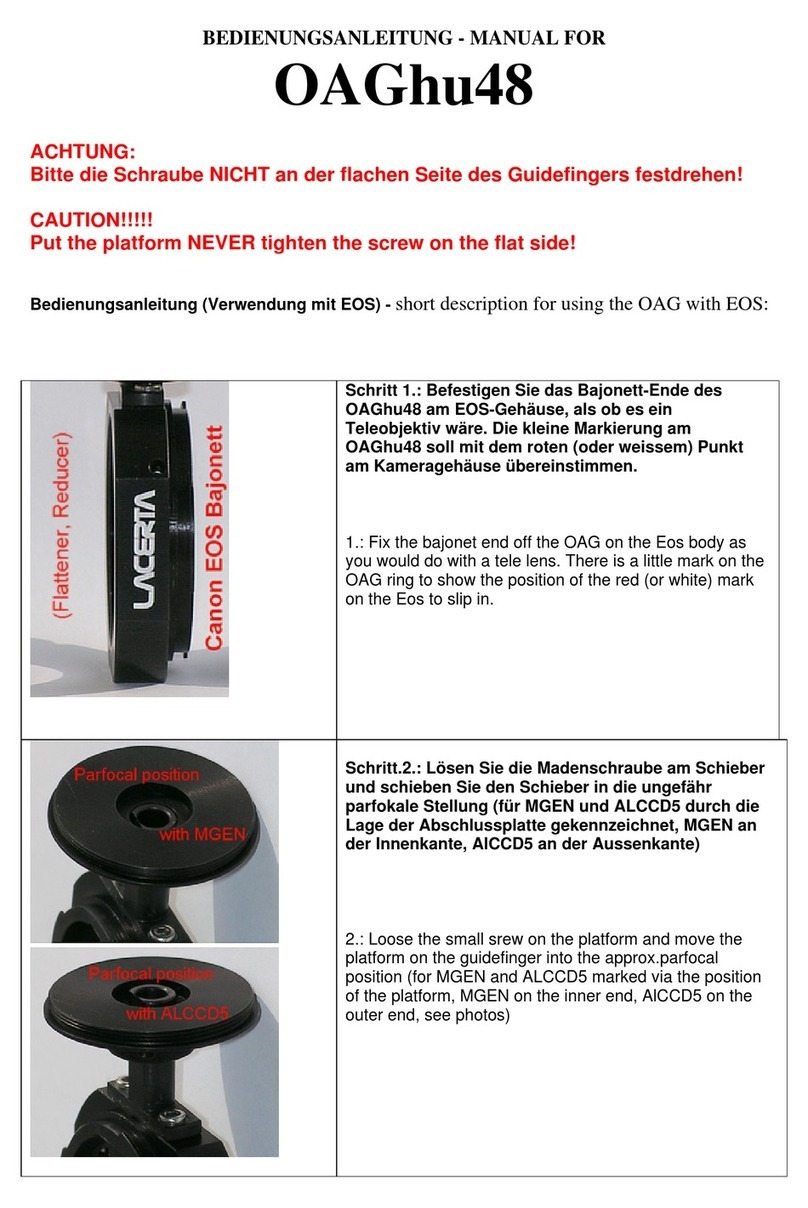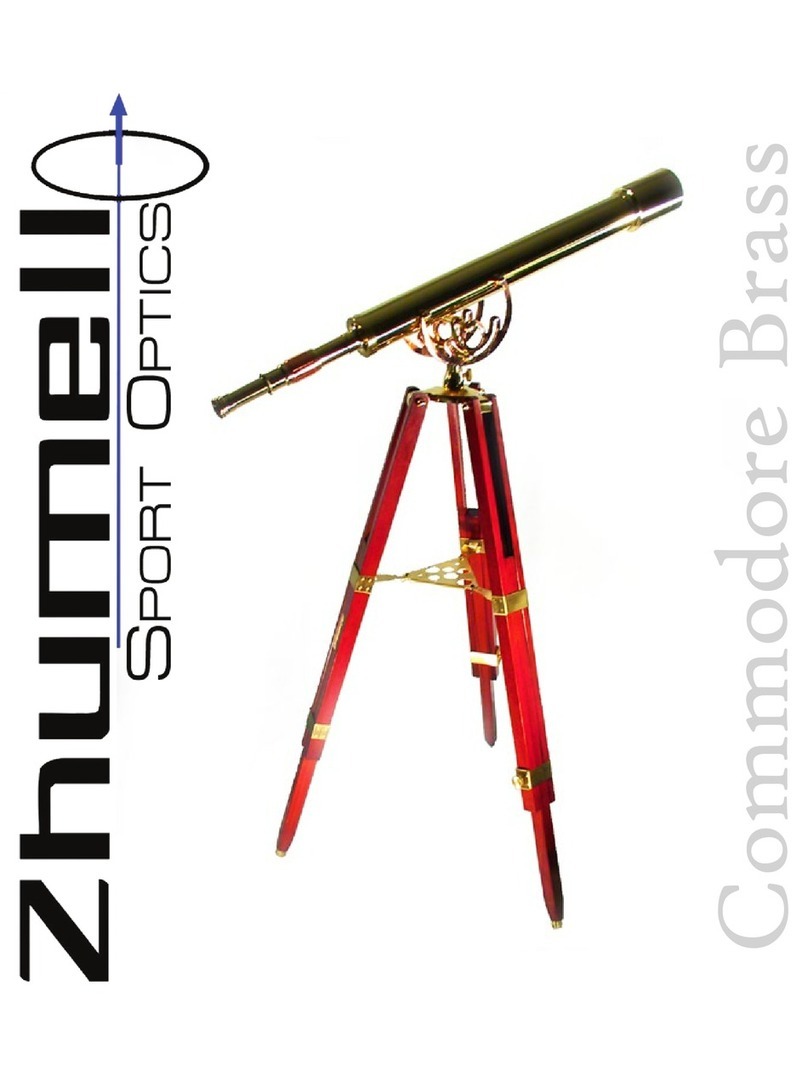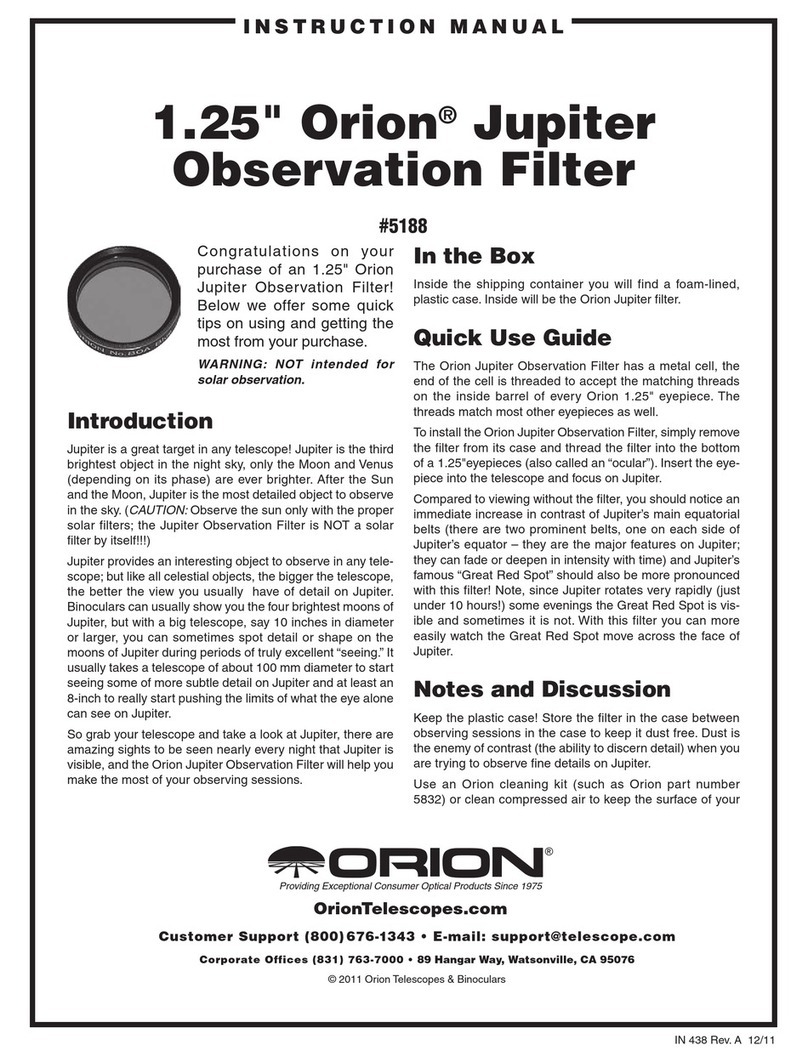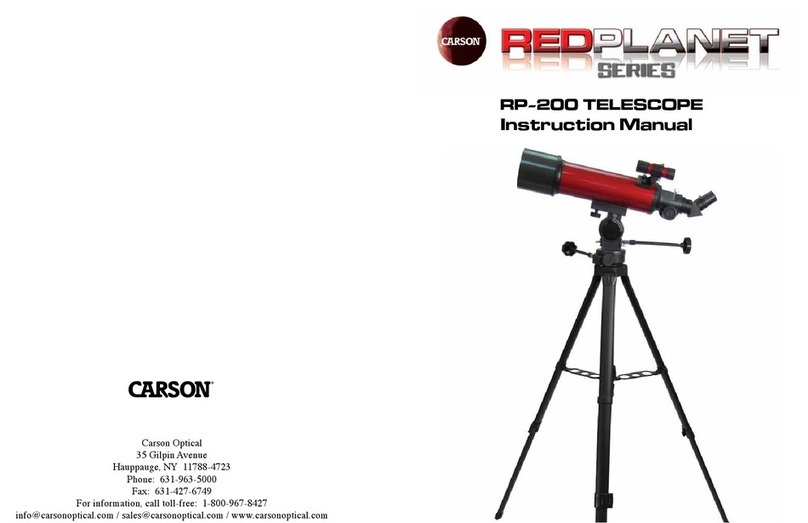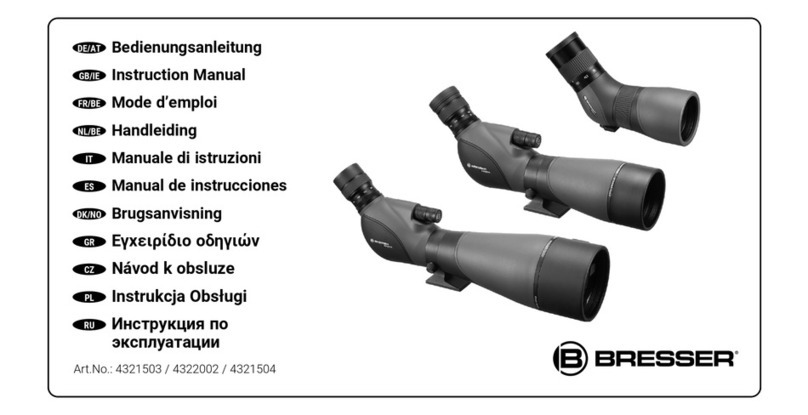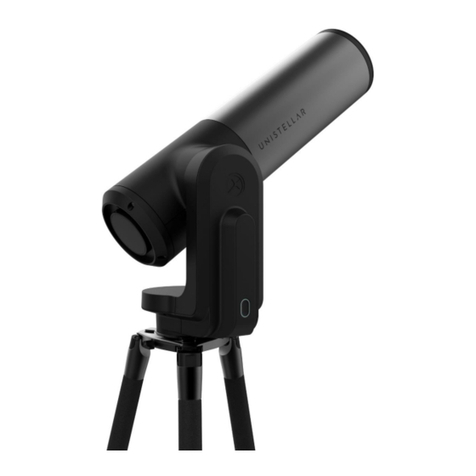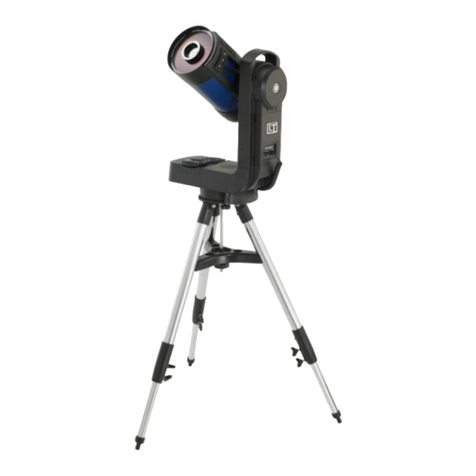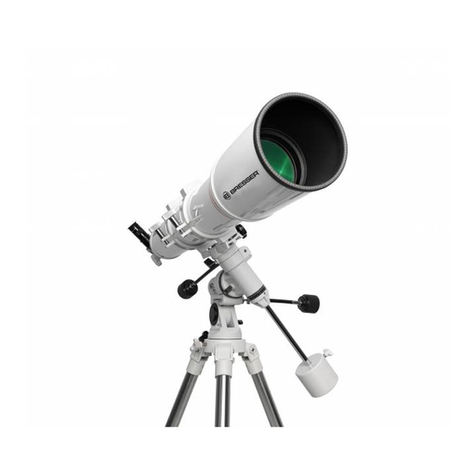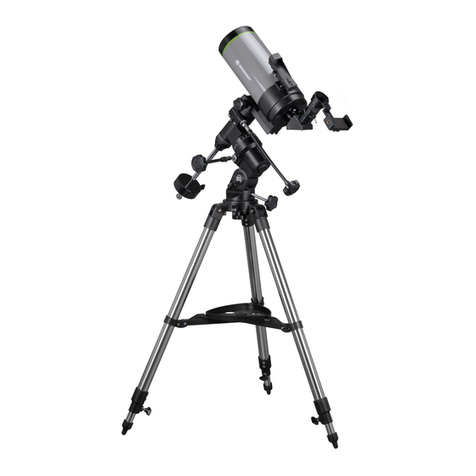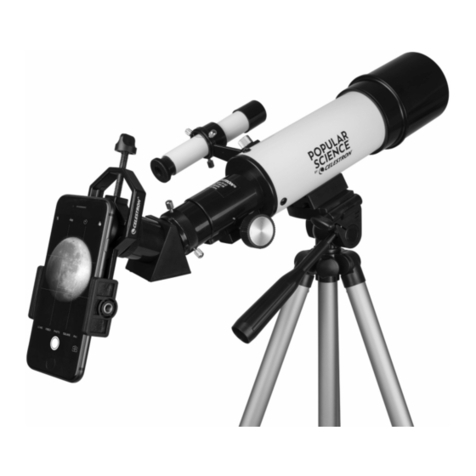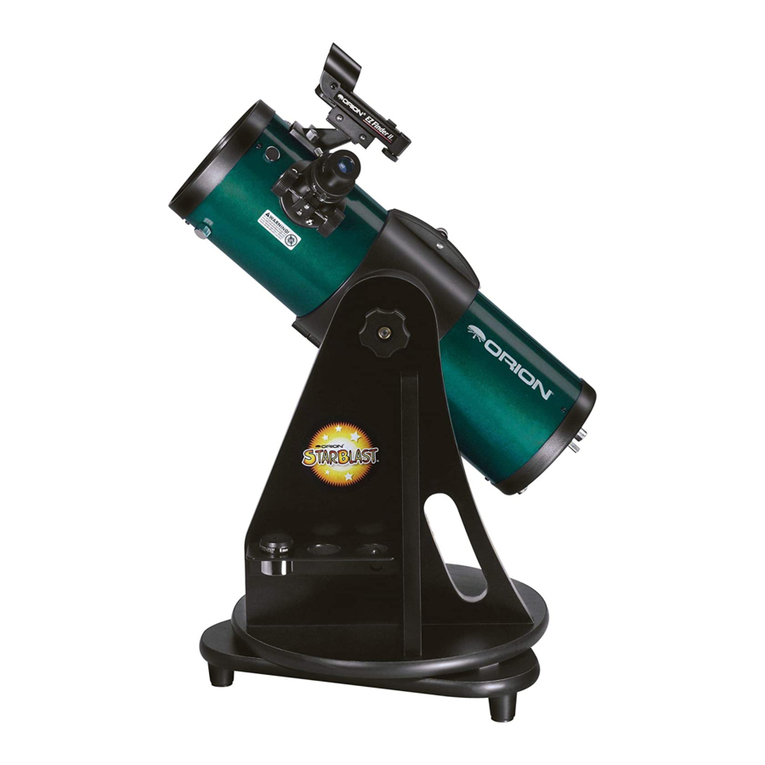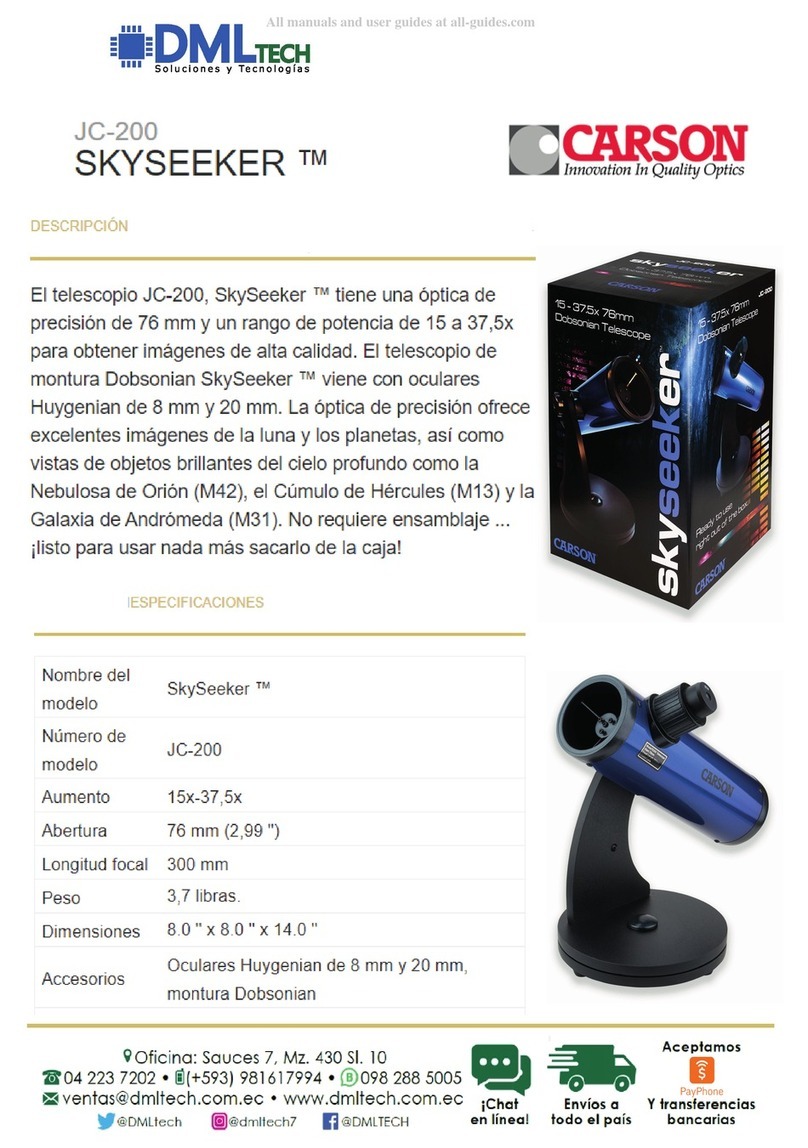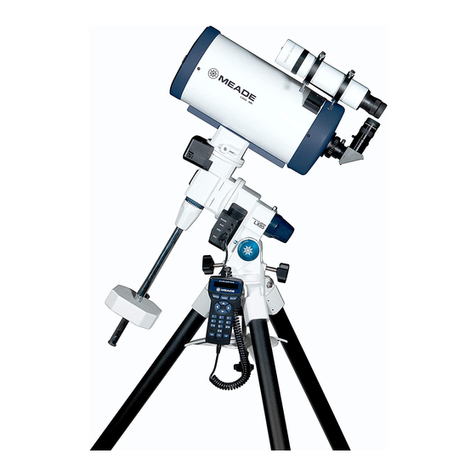ELTEC IR-EYE 860M1 User manual

IR-EYETM
Directional Long Range
Narrow Field-of-View
Passive Infrared Thermal Telescopes
with:
Analog Output(s) to mate with
Contractor-Developed Signal Processing
or Legacy Systems
Model 860M1
Model 860M5
Model 860M6
Please note: These telescopes do not provide either relay or TTL
outputs. They are made available for special signal processing
systems. For units that do provide relay and TTL outputs, see Eltec
Models 864 and 864M3.

THIS PAGE LEFT INTENTIONALLY BLANK

SECTION 1
INTRODUCTION
1.1 RANGE AND PERFORMANCE
1.2 BASICS OF PASSIVE INFRARED (PIR) DETECTION
1.3 DESCRIPTION
1.4 FUNCTION
1.5 FIELD-OF-VIEW
1.6 DETECTABILITY CONSIDERATIONS
1.7 ENVIRONMENTAL CONSIDERATIONS
1.8 INSTALLATIONCONSIDERATIONS
1.9 POTENTIAL FALSE ALARM SOURCES
SECTION 2
INSTALLATION AND OPERATION
2.1 INTRODUCTION AND PRECAUTIONS
2.2 UNPACKING
2.3 POWER REQUIREMENTS
2.4 CONNECTION TO EXTERNAL EQUIPMENT
2.5 TAMPER SENSE (MODEL 860M5 AND 860M6 ONLY)
2.6 AMPLIFICATION REQUIREMENTS
2.7 MECHANICAL OUTLINE
2.8 MOUNTING
2.9 MOUNTING AND ACCESSORIES
2.10 OPERATION
2.11 ALIGNMENT
2.12 WALK TESTING
2.13 WALK TESTING FIELD-OF-VIEW
2.14 MAINTENANCE
2.15 MODEL 860M1 / 860M5 / 860M6 SPECIFICATIONS
2.16 ACCESSORIES

SECTION 1 - - INTRODUCTION
1.1 RANGE AND PERFORMANCE
The range of these telescopes is nominally 500 feet (with appropriate customer supplied electronics)
for personnel and farther for vehicles. HOWEVER, range is dependent on the thermal contrast
betweenthetargetandthebackground. Youwillfindthatthisvariesthroughouttheday,withweather
conditions, and even with the clothing of the target. If your application involves detecting someone
crossing through a field of grass, you will find that the undulation of the grass on a windy day will
appear on the analogoutput signals. Thus the system is limited by the thermal contrast of the target
against the background as well as thermal background noise.
Forshorterrange(~200ft)ormorecovertapplications,EltecsuggeststheModel8502M3or8502M7.
The Model 8502M3 is a short range version of the Model 860M5 and the Model 8502M7 is a short
rangeversionoftheModel860M6. Theshortrangeandlongrangeversionsarepinforpincompatible
and use the same connector. The short and long range versions differ with regard to directionality
(refer to the Directionality Considerations section for the appropriate Model).
Performance will greatly depend on the amplification you use with the telescope’s analog output
including your bandpass filtering. Many feel that human motion is sufficiently detected through the
frequency range of 0.3 to 3 Hz. Yet, the conditions of your application may require a broadening of
that range - - with a consequent increase in noise. Eltec recommends that you AC-couple the
telescope’s analog output. The current draw per channel should be typically 8 microamps.
1.2 BASICS OF PASSIVE INFRARED (PIR) DETECTION
Eachperson,object oranimalemits infraredenergyas afunctionof itssurfacetemperature andsize.
For temperatures around ambient the maximum of the radiated energy is in the region of 10 microns
(20 times the wavelength of visible light). Thermal changes, relative to the background, within the
telescope’sfield ofviewas producedby amoving targetgeneratea signalwhich willtrigger analarm.
PIR detection has become the most widely used approach for indoor intrusion detection and Eltec
provides a proven high reliability sensor for both indoor and outdoor applications.
PIR detection does not require an emitter, but makes use of radiation which is already there - 100%
natural and harmless. The fact that no radiation is emitted also means that:
• A sensor unit cannot be detected by any technical means. Like the human eye, it is completely
passive in operation.
• No license is required as for microwaves.
• No eye protection required as with many active IR devices.
• Neighboring units will not interfere with each other.
• Directional information can be obtained utilizing an internal two channel detector and appropriate
external electronic circuit.
1.3 DESCRIPTION
These telescopes are specificallydesigned for useas a component ina total security systemfor long
range detection of people and vehicles. Eltec’s passive infrared thermal telescopes have been
Page 1

deployedworldwideforovertwodecadesinsecuritysystemsforindustrial,governmentalandmilitary
installations. The rugged, watertight, hermetically sealed construction of these telescopes make
them ideal for outdoor applications. The telescope’s use of state-of-the-art detector technology and
precision optics, coupled with advanced signal processing optimizes the discrimination of moving
targets from other events. This technology is an exciting alternative to microwave or active infrared
links and is also ideal in critical applications where dual technologies are desired. The simple
installation process, and the variety of options available, make these telescopes well suited for a
number of applications, some of which include detection of personnel, vehicles, boats, airplanes,
fires,explosions,etc. Thetelescopescanbeusedinbothfixedandtemporaryinstallationstomonitor
events at long distances.
1.4 FUNCTION
A person or vehicle will always have a temperature contrast in respect to the background, producing
a change of radiation within the field of view whenpassing through it. This temperature contrast can
be as little as 1oC or less (either positive or negative) for a person at the nominal distance of 500ft
to trigger the alarm. A precison mirror focuses the radiation ontoa twin channel pyroelectric detector
which will produce a defined signal from a moving target. Two stage optical filtering restricts the
radiation to the "atmospheric window" (8 - 14 microns) where the effects of the normal constituents
of the atmosphere (particularly humidity) least affect the transmission of infrared radiation. This
doubleopticalfilteringminimizesunwantedradiationfromsunlightorheadlightswhichotherwisemay
produce false alarms.
1.5 FIELD-OF-VIEW
Please note: This manual discusses installation and operation of the Model 860M1, 860M5 and
860M6 telescopes. The field of view is the same for all models. The difference between the models
is that the 860M5 and 860M6 have the added tamper sense feature.
The field of view consists of two distinct segments. The area covered as a function of distance is
showninFigs1.1,1.2 and 1.3. Thisstandardfieldofviewisideallysuitedforobservationof a defined
spot from a distance.
Figure 1.2
Figure 1.1
Vertical Coverage
Side View Detail
Horizontal Coverage
Top View Detail
Page 2
Data is calculated and subject to variations in environmental changes

Please note that a non-directional unit with curtain coverage similar to the Model 864 is available.
Thisisthe Model860M4withoutinternalelectronics. Forfurtherdetails,pleasecontactthe Technical
Support staff at Eltec Instruments.
1.6 DETECTABILITY CONSIDERATIONS
These passive infrared telescopes produce an analog signal when seeing a change of optical
radiation corresponding to a movement within or across the field of view. Although the telescopes
are most sensitive to movements across the field of view, movement towards the telescope will also
be detected with a high degree of probability.
1.7 ENVIRONMENTAL CONSIDERATIONS
One of the major concerns is the influence of various weather conditions on the detection range.
Calculationsverifiedbyactualtestsshowthattheinfraredsignalattenuationcanalmostbeneglected
for points 1 to 9 on the International Visibility Scale (see Table 1) corresponding to dense fog and
perfectly pure air, respectively. Only forvisibility0 (verydensefog) willtheattenuation be significant,
but detection range will still be typically up to 50% more than the distance the human eye will see.
Page 3
DISTANCE
COVERAGE (X) SIZE (Y) SIZE
100 ft. 1.42 ft. 2.39 ft.
200 ft. 2.83 ft. 4.79 ft.
300 ft. 4.25 ft. 7.18 ft.
400 ft. 5.67 ft. 9.58 ft.
500 ft. 7.09 ft. 11.97 ft.
Field-of-View
Figure 1.3
Data is calculated and subject to variations in environmental changes
Directional Considerations: When a target is
traveling from the left to the right (when viewed from
the rear of the telescope), Output Pin C will exhibit a
signal first then Output Pin A will exhibit a signal.
When a target is traveling from the right to the left
(whenviewedfromtherearofthetelescope),Output
Pin A will exhibit a signal first then Output Pin C will
exhibit a signal.

1.8 INSTALLATION CONSIDERATIONS
Thesetelescopesaremostfrequentlyusedwhentheintruder’sdirectionis importantorcritical. They
may be used across a natural "trap" zone like a gulley, river ford, or trail and for perimeter protection.
They are often used across a road to signal that a vehicle has passed and in what direction. They
are frequently aimed across runways of isolated or covert airstrips.
For perimeter protection, Eltec’s "curtain coverage" telescopes are generally preferred. However, if
intruders are most likely to be walking or running and/or small animals have been a source of false
alarms, the narrow FOV telescopes aimed horizontally to the side of a building, a mound or other
vertcal object may be an excellent solution.
In perimeter protection applications, or similar fixed installations for people detection, it is recom-
mendedtolimittherequireddetectionrangeto300ftbygroundingoutthetelescope. Longersections
of a perimeter can be divided into portions of 300 ft, each being covered by one telescope (see Fig
1.4). This kind of set-up will give reliable detection under virtually all climatic conditions.
It is important to note that the range of the telescope is not limited by, but a function of, size and
temperature of the target. A car or an airplane may trigger an alarm when crossing the field of view
at a mile distancedependingon the conditions. This is avoidedin practice by pointing the telescopes
slightlydownwardorby havingthetelescopes faceadefinedbackground (wall,hill,orembankment).
An alternate, which is commonly chosen in high security applications, is to protect a given section
bytwotelescopesfacingeachother(seeFig1.5). Byelectricallylinkingtwounitsinan"and"function,
an alarm will only be triggered if both telescopes give a simultaneous alarm, indicating movement
seen by both units. Naturally this type of set-up greatly reduces the false alarm probability.
Additionally, such an arrangement, if switched to an "or" function at certain times of increased risk of
intrusion or very poor visibility, can be made extremely sensitive.
Figure 1.4
Figure 1.5
300 ft
300 ft
Page 4

For protection of a corner, the following installations are recommended (Figs 1.6 & 1.7)
For Perimeter with Chain-Link Fence:
If the telescope is aimed at the fence, it will "see through" the fence and alarm in response to people
and vehicles on the other side. To avoid this, the telescopes can be aimed at the ground. Or a panel
canbeaddedtothefence. Possiblematerials:marineplywoodoracryllicplasticsheet(thisisopaque
in the long wave infrared). See Fig 1.8.
1.9 POTENTIAL FALSE ALARM SOURCES
Various sources may affect the performance of an outdoor security system. For instance, DO NOT
aim the telescope into the horizon (straight out), UNLESS you are aiming into a wall, the side of a
buildingoranembankmentthatiswithinyourmonitoredperimeter. Althoughthetelescopewilldetect
a person at 500 feet under most conditions, it may detect a larger heat source, like a truck or an
airplane, to a distance greater than several thousand feet, or thermal perturbations in distant
Telescope
Blocking
Panel
Figure 1.8 - Use of a Blocking Panel
Page 5
Figure 1.6 Figure 1.7

atmospheric masses. Thus, the end of the field of view should be a stable thermal background
(something that changes temperature very slowly, like the earth or a concrete wall, etc.). See Fig
1.9. If the telescope seems to be giving false trips, the first thing to check (after verifying that there
is proper voltages to electronics and telescope) is the aiming, to make sure that detection of motion
of distant objects is not the source of unwanted alarm signals. REFER TO OPERATION, AND
ALIGNMENT SECTIONS. Passive infrared detection can perform exceptionally well under almost
all conditions.
Page 6
Figure 1.9 - Grounding with Actual Terrain
Telescope
Side
Road
Main
Road
Hill

SECTION 2 - - - INSTALLATION AND OPERATION
2.1 INTRODUCTION AND PRECAUTIONS
Before installing the telescope, please read this section carefully. Should any difficulties arise, contact your supplier or
Technical Support staff at Eltec Instruments directly.
IMPORTANT NOTICES FOR INSTALLATION AND SERVICE PERSONNEL:
Handle the telescope with care
The unit is a precision instrument and will not function to its specifications if subjected to mechanical shock or undue
stress. DO NOT point the unit into the sun or other intense source of infrared radiation
The telescope contains precision optical components that focus infrared energy onto very sensitive pyroelectric
components. Intense sources of infrared will destroy these components and possibly damage the optics.
DO NOT touch the front window with bare hands
Salts and acids from the hands may damage the surface of the window. To clean the window, use only a soft, clean
cloth. Cloth may be moistened with distilled water or alcohol in severe conditions. Clean the window very gently, do not
apply undue pressure as the window is fragile and may be damaged or broken.
Use precautions in lightning storms
In lightning prone areas, take measures to arrest lightning discharges and electrostatic buildup.
2.2 UNPACKING
Remove the unit from the shipping container and carefully check for signs of damage. Any such damage should be
reportedtoyoursupplierortotheTechnicalSupportstaffatEltecInstrumentsdirectly. Donotattempttoinstalla damaged
unit until advice has been obtained.
2.3 POWER REQUIREMENTS
The telescope can be used over a wide voltage range from 3.0V to 15V DC. The voltage must be DC, any ripple on the
supply voltage will be present at the output of the telescope. Avoid running low voltage DC next to AC power cables over
long distances. Induced AC ripple and noise in the DC supply will be present at telescope’s output.
2.4 CONNECTION TO EXTERNAL EQUIPMENT
2.5 TAMPER SENSE (MODEL 860M5 AND 860M6 ONLY)
The difference between the Model 860M5 and the Model 860M6 are the internal tamper sense connections. The Model
860M5 tamper sense connects to V+ through a 2 megohm resistor. The Model 860M6 tamper sense is connected to
ground.
Page 7
PIN DESIGNATION
A OUTPUT
B GROUND
C OUTPUT
D V+ (3 TO 15V DC)
E N/C
F N/C
PIN DESIGNATION
A OUTPUT
B GROUND
C OUTPUT
D V+ (3 TO 15V DC)
E N/C
F TAMPER SENSE
Model 860M5 and 860M6Model 860M1

2.6 AMPLIFICATION REQUIREMENTS
These telescopes require customer developed signal processing. The schematic below depicts a sample amplification
circuit with a single supply, 0.1 Hz to 10 Hz frequency response and a gain of 500, which can be tailored as needed for
the individual application.
2.7 MECHANICAL OUTLINE
Optics and detector are sealed into a rugged watertight hermetically sealed PVC housing providing exceptional thermal
isolation and immunity to thermal shock. RFI protection is provided for use near strong RF sources such as radar and
communicationstransmitters.
Page 8
Figure 2.1
Dimensions 13.0 in.
3.5 in. Dia.
INPUT
V+
GND
INPUT
A
D
B
C
100µF
C4
R9
100K
R1
21
4
3
R6
8
C5
6.81M
U1B
2.2nF
54
7
6
U1A
LMC6062
(or equivalent)
8
1.54K
R8
3.3µF
C6
1.54K
R4
3.3µF
C3
V+ 5 TO 15V
GND
ANALOG
OUTPUT
100K
100µF
C1
ANALOG
OUTPUT
13K
R5
13K
R10
6.81M
R7
6.81M
R2
C2
2.2nF
.1Hz TO 10Hz SINGLE SUPPLY AMP WITH GAIN OF 500
NOTES: ALL CAPACITORS ARE 10%, 10V, ALUM., EXCEPT FOR C2 AND C5.
CAPACITORS C1 AND C4 MUST HAVE A LEAKAGE < 1µA.
ALL RESISTORS ARE 1%, 1/4W, MFLM.
AMPLIFIER MAY HAVE TURN ON TIME OF SEVERAL MINUTES.
OFFSET WILL BE ONE HALF OF V+ (ADJUST RATIO OF R1 AND R9 TO CHANGE).
NOTICE:
THE INFORMATION PROVIDED HEREIN IS BELIEVED TO BE RELIABLE. HOWEVER, ELTEC INSTRUMENTS, INC. ASSUMES NO
RESPONSIBILITY FOR INACCURACIES OR OMISSIONS. BY PROVIDING TECHNICAL INFORMATION, ELTEC DOES NOT INTEND
TO OFFER OR PROVIDE ENGINEERING SERVICES OR ADVICE CONCERNING THE CUSTOMER’S DESIGN AND ELTEC ASSUMES
NO LIABILITY FOR APPLICATIONS ASSISTANCE. THE CUSTOMER IS FULLY RESPONSIBLE FOR ALL DESIGN DECISIONS AND
ENGINEERING WITH REGARD TO ITS PRODUCTS, INCLUDING DECISIONS RELATING TO THE APPLICATION OF ELTEC
PRODUCTS.
6.81M
R3

2.8 MOUNTING
Refer to Fig 1.2 which shows the effect of different mounting heights on coverage. An alignment telescope (AO55) is
available to aid installation.
The telescope isan extremely sensitive longrangedetector. For this reason,mounting mustbe onaverystable structure.
Theverylong,narrowdetectionfieldandhighsensitivityofthetelescopemakesitsusceptible to false alarms from motion
if not mounted securely.
2.9 MOUNTING AND ACCESSORIES
The telescopes are easily mounted on any stable vertical pole or other solid structure. For stable mounting and easy
aiming the following accessories can be supplied:
Page 9
Double Mounting Bracket No. AO54M1
The part clasping the telescope is fixed to a platform
with a nut for adjustment of the elevation. The other
part is fixed to the pole with 360orotation capability
for aiming the telescope to any desired direction.
Suitable for pole diameters of 1.5 to 3.0 inches.
Mounting Bracket No. AO56M1
This is only the part actually clasping the telescope
(mounting ring and base connection of AO54M1).
Suitable for other ways of mounting (e.g. walls or
tripods).
Telescopic Sight No. AO55
The telescopic sight can be placed on top of the
telescope as an alignment aid and removed after-
wards. A recticle indicates the center of the field of
view.

2.10 OPERATION
Mounting
First aim the telescope at the desired direction and fix it firmly as previously described.
Electrical Connections
Connect electronics to the telescope’s connector, observing proper connections listed in section 2.4.
Power-Up
When the power is applied to the telescope, there is a period of approximately 2 to 5 minutes during which the internal
circuitry stabilizes. During this period, the telescope sensitivity may vary slightly as the internal temperature stabilizes.
Allow 5 minutes for complete stabilization.
Nuisance Alarms
When the telescope registers what seems to be false alarms overnight, it is sometimes difficult to identify the source of
the problem. Often it is small animal activity which may be confined to only one section of a perimeter. Sometimes it is
branches or other vegetation being moved by the wind into the telescope’s field of view. A good approach is to "blind"
the telescope with an opaque bag - - testing that it is indeed rendered insensitive to motion. Then if the unit alarms in
the trouble period, the source may be the power supplied to the telescope (an unlikely problem if other telescopes run
from the same supply), a fault with the telescope itself or a fault with the associated electronics. If the telescope does
notalarm through thetroubleperiod when blinded,thenthe actual fieldofview shouldbeverified by walk testing toinsure
that the telescope is not picking up distant vehicles or motion from an adjacent area. In addition, many telescope users
have used the scope output to trigger a recording CCTV system with time/date stamp for alarm source verification. This
approach is highly recommended.
2.11 ALIGNMENT
To align the telescope forsmall installations, walk testing is recommended. This is thebestwayto make final adjustments
to the detection area.
For large installations, it is recommended to use the optional alignment telescope (AO55) for initial aligning with final
placement optimized by walk testing.
2.12 WALK TESTING
Final aiming is done by walking across the field of view and observing the point where an alarm is triggered.
2.13 WALK TESTING HORIZONTAL FIELD-OF-VIEW
Page 10
It is best to walk slowly in
one direction until alarm is
actuated and then repeat
the process from the other
direction to accurately
define the width of
coverage at a given dis-
tance.
1) Walk from one direction to
alarm indication and drop a
marker for each channel.
2) Walk from the other direc-
tion to alarm indication and
drop a marker for each chan-
nel, distance between
markers is horizontal field of
view at that distance from
telescope.
Spread of covered zones
greatly exaggerated
Distance from telescope
Horizontal
Field-of-View
Telescope

2.14 MAINTENANCE
Servicing
The telescopes are sealed units. The only servicing required is to clean the front window every 90 days with a clean,
soft cloth. This may need to be done more often in dusty environments. Cloth may be moistened with distilled water in
severe conditions. Clean the window very gently, do not apply undue pressure as the window is fragile and may be
damaged or broken. At the same time, the detection field should be walk tested to check its sensitivity. Should problems
arise, please contact our Technical Support staff for advice.
DO NOT TOUCH THE WINDOW WITH BARE HANDS. SALTS AND ACIDS FROM THE HANDS MAY DAMAGE THE
SURFACE OF THE WINDOW.
THE TELESCOPE CONTAINS NO USER SERVICEABLE PARTS AND IN THE EVENT OF FAILURE SHOULD BE
RETURNED TO ELTEC INSTRUMENTS, INC. FOR REPAIR. THE TELESCOPE IS HERMETICALLY SEALED AND
NITROGEN BACKFILLED. ANY DISASSEMBLY WILL COMPROMISE THE SEAL AND VOID THE WARRANTY.
2.15 MODEL 860M1 / 860M5 / 860M6 SPECIFICATIONS
Mechanical
Weight . . . . . . . . . . . . . . . . . . . . . . . 2 lbs, 12 oz
Size . . . . . . . . . . . . . . . . . . . . . . . 3.50" (8.89 cm) dia x 12.93" (32.84 cm) long
Enclosure . . . . . . . . . . . . . . . . . . . . . . . Painted PVC, hermetically sealed
Color . . . . . . . . . . . . . . . . . . . . . . . O.D. Green
(other colors available as special order)
Optical
Nominal Range . . . . . . . . . . . . . . . . . . . . . . . 500 ft (152 m)
with appropriate customer-supplied electronics
Spectral Response . . . . . . . . . . . . . . . . . . . . . 8 to 14 microns, double filtered
Detectors . . . . . . . . . . . . . . . . . . . . . . . Two channel Lithium Tantalate Pyroelectric
Electrical
Supply Voltage . . . . . . . . . . . . . . . . . . . . . . . 3 to 15 VDC
Supply Current . . . . . . . . . . . . . . . . . . . . . . . 25µA max
Output . . . . . . . . . . . . . . . . . . . . . . . Analog
Environmental
Operating Temperature Range . . . . . . . . . . . . . . . -40oto +70oC
Storage Temperature Range . . . . . . . . . . . . . . . . -40oto +70oC
Atmospheric Pressure . . . . . . . . . . . . . . . . . . . 1 atmosphere (15 PSI) positive or negative (vacuum)
Sealing . . . . . . . . . . . . . . . . . . . . . . . Watertight hermetic seal
Note: Housing is hermetically sealed and nitrogen backfilled to prevent condensation of moisture on the optics
at low temperature. Any disassembly of this unit will break the seal and void the warranty.
2.16 ACCESSORIES
AO54M1 = Double Mounting Bracket
AO55 = Removable Telescopic Sight
AO56M1 = Single Mounting Bracket (Split Ring)
Page 11

Notes:
ELTEC Instruments, Inc. P.O. Box 9610 Daytona Beach, Florida 32120-9610 U.S.A.
Tel (USA and Canada): (800) 874-7780 Tel (Outside USA): (386) 252-0411 Fax: (386) 258-3791
Web: www.eltecinstruments.com E-Mail: Sales@eltecinstruments.com
©ELTEC INSTRUMENTS, INC. 07/2017 Printed in U.S.A. Form DS860M1-5-6 (E-07/2017)
NOTICE: The information provided herein is believed to be reli-
able. However, ELTEC Instruments, Inc. assumes no responsibility
for inaccuracies or omissions. Due to industry components being
incorporated into ELTEC’s devices and ELTEC continually striving for
product improvement, specifications may change without notice.

International Visibility Scale
Points Qualitative
Visibility Range of
Visibility Transmissivity
per Kilometer Atmospheric
Conditions
0
Very Poor
0 - 50 m < 10-6 Very dense fog
1 50 - 200 m 10-4 - 10-6 Dense fog; very
heavy snow
2 200 - 500 m 10-3 - 10-4 Moderate fog;
heavy snow
3
Poor
500 - 1,000 m 10-2 - 10-3 Light fog;
moderate snow;
thick haze
4 1 - 2 km 0.02 - 0.15 Moderate snow;
very heavy rain;
moderate haze
5
Intermediate
2 - 4 km 0.15 - 0.4 Light snow; heavy
rain; thin haze
6 4 - 10 km 0.4 - 0.7 Moderate rain;
very light snow;
thin haze
7 Good 10 - 20 km 0.7 - 0.8 Light rain; no
precipitation
8 Very Good 20 - 50 km 0.8 - 0.9 No precipitation
9 Exceptional > 50 km 0.9 - 1.0 Perfectly pure air
Notes: 1. The transmittance refers to λ= 0.61 µ. 2. The values for 0 - 3 points are rough estimates due to meager
experimental data.
(Bramson: Infrared Radiation, Plenum Press, N.Y., 1968)
TABLE 1
ELTEC Instruments, Inc. P.O. Box 9610 Daytona Beach, Florida 32120-9610 U.S.A.
Tel (USA & Canada): (800) 874-7780 Tel (Outside USA): (386) 252-0411 Fax (386) 258-3791
©ELTEC INSTRUMENTS, INC. 05/2006 Printed in U.S.A. Form IVS (E-07/2017)
This manual suits for next models
2
Table of contents

